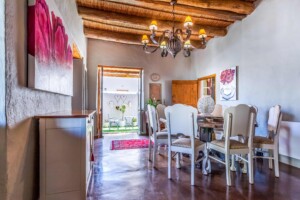
True confessions: I sometimes binge-watch YouTube designer Vlogs. It seems like sometimes they all copy each other within weeks, in terms of what topic they choose to feature. They all discuss how to style different rooms and pieces of furniture in order for spaces to look “elevated” and more luxurious than they really are—catering to all those watching who are on a budget.
All the designers highlight trends in color and other aspects of design, including what NOT to do, which people would regret immediately or eventually. One popular YouTube designer topic is how to remodel or decorate spaces in a “timeless” manner so that your spaces are not likely to look “outdated” too soon, or ever.
I’ve been asked, as a Feng Shui consultant, if certain types of architecture or design have inherently bad Feng Shui and the answer is usually “no.” However, there are some styles and trends, which may challenge the good Feng Shui of a room. For example: exposed beams go in and out of style and one of the first things a feng shui student learns is that sleeping under exposed beams can cause health issues. That said: the rounded New Mexican log style beam is not as problematic as the square shaped beam with sharp corner edges.
Some people like to change up their interior design and décor periodically to match the current times, while other people live in their house with the original windows, kitchen and bathroom surfaces, flooring and wall treatments. You will hardly ever see, for instance, a current home with the 1970’s wood veneer paneling on the walls. One can even wonder why this was ever popular, making rooms look cheap and dark at the same time. Current-day manufactured homes still use the veneer paneling for reasons I can’t even guess.
A popular trend in the 1970’s was to have a master bedroom emulate a hotel suite, with an open concept and the bathroom sinks visible from the bed. For all practical reasons, it is better to have a closing door separate the bathroom from the bedroom.
As trends and styles move in and out of fashion, it should not have a dramatic effect on your Feng Shui remedies or sensibilities. Often, a remedy may be so inconspicuous, that guests do not even know what they are looking at or sitting on was an intentional Feng Shui decision.
There can be exceptions, where bold colored accent walls should, ideally, have Feng Shui taken into consideration before committing to a bright red entry wall or a bright orange bedroom, as examples.![]()
Hardly is there ever a design trend where the shape or volume of a piece of furniture, like a couch, could be deemed bad Feng Shui, as no one wants to intentionally put too much in a room, making it difficult to move around.
Nor is there one style of lighting, standing lamps or hanging light fixtures, which could be deemed good or bad according to Feng Shui principles.
Even when it was trendy to create very “severe” angular post-modern architecture, designers with a sense of balance would integrate soft and curvy furnishings to compensate for all the straight lines.
A big part of the architectural, design and landscaping choices you may make are also subjective, which is real for you and which you should indulge yourself in. For example, one person may feel a great sense of relaxation in a wild, lush English garden. Another person may feel at peace with a more minimalist zen type sand garden. Neither has any superiority over the other.
Author: Kartar Diamond
Company: Feng Shui Solutions ®
From the Landscape and Design Blog Series
